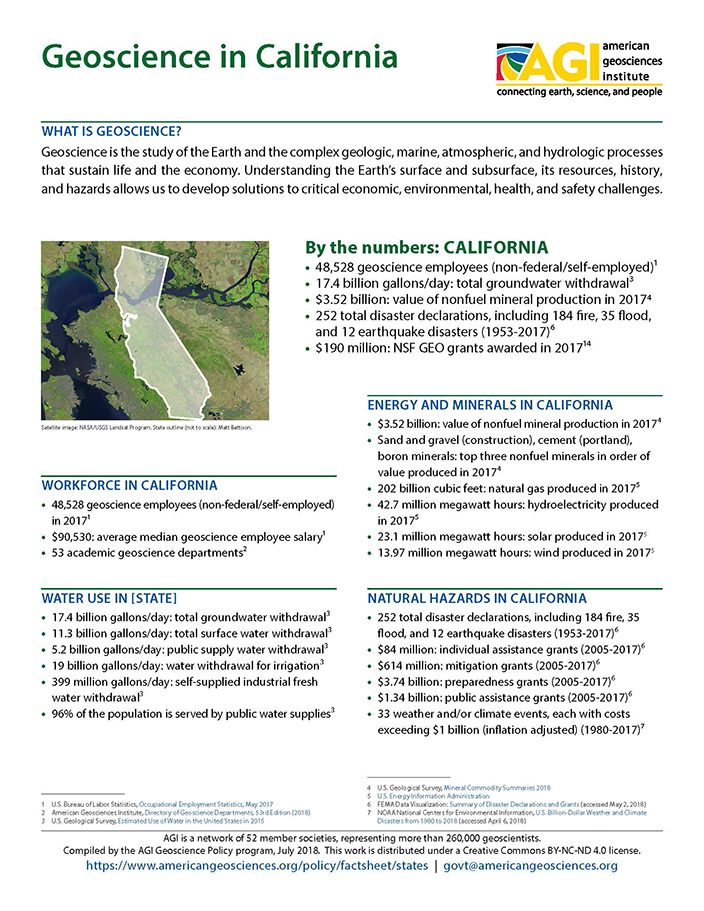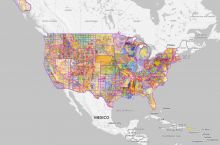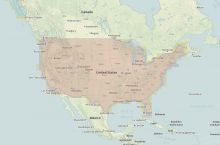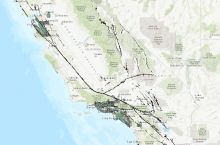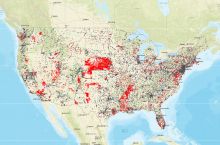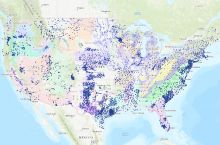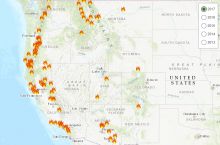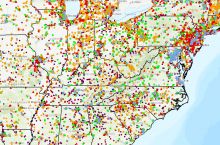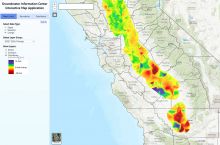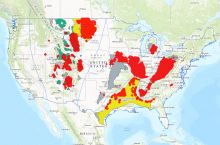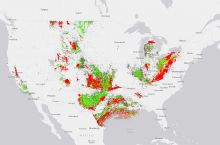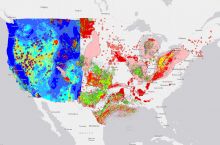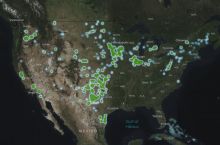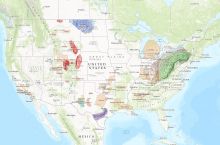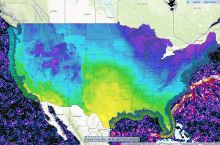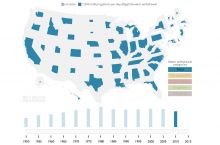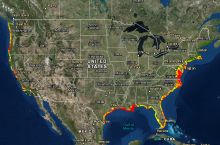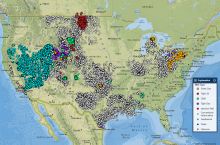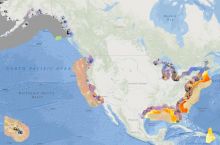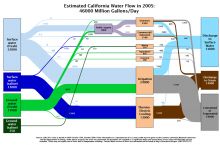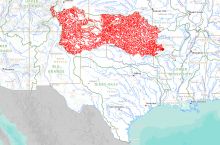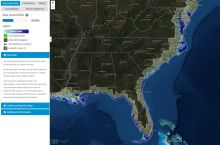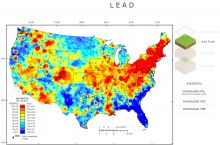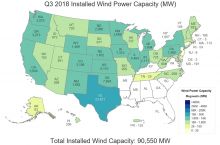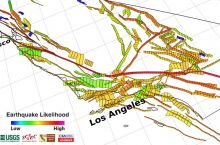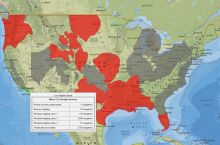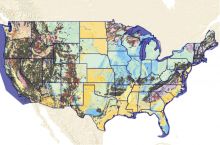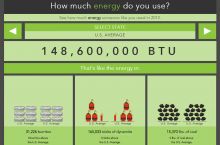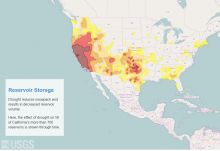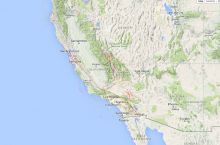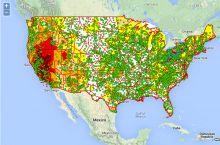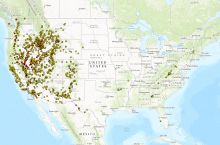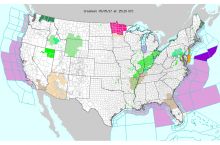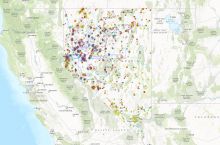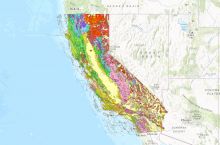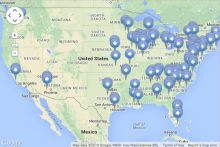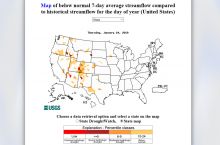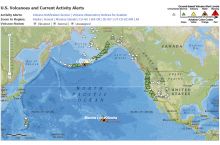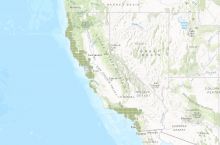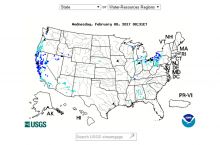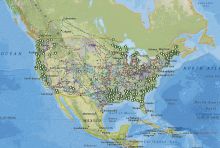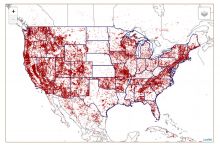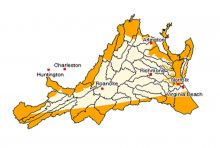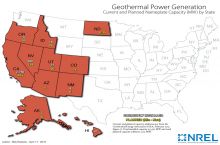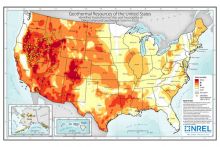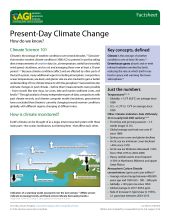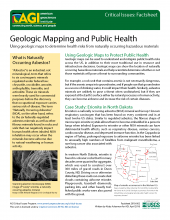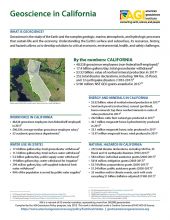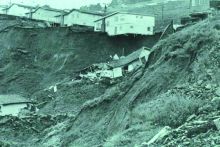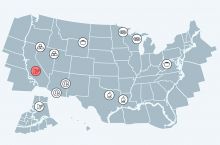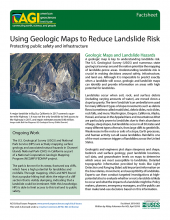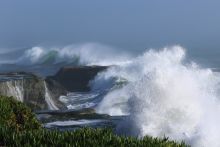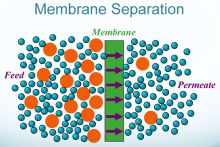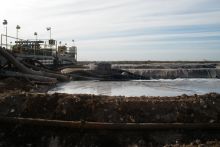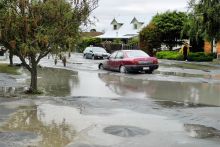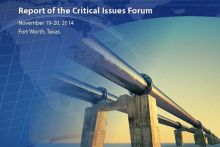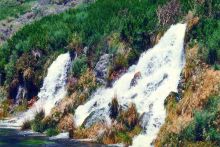By the numbers: California
- 48,528 geoscience employees (excludes self-employed)1
- 17.4 billion gallons/day: total groundwater withdrawal3
- $3.52 billion: value of nonfuel mineral production in 20174
- 252 total disaster declarations, including 184 fire, 35 flood, and 12 earthquake disasters (1953-2017)6
- $190 million: NSF GEO grants awarded in 2017...
Agencies Working on Geoscience Issues in california
In 1956, the Legislature passed a bill creating DWR to plan, design, construct, and oversee the building of the nation's largest state-built water development and conveyance system. Today, DWR protects, conserves, develops, and manages much of California's water supply including the State Water Project which provides water for 25 million residents, farms, and businesses.
Working with other agencies and the public, DWR develops strategic goals, and near-term and long-term actions to conserve, manage, develop, and sustain California's watersheds, water resources, and management systems. DWR also works to prevent and respond to floods, droughts, and catastrophic events that would threaten public safety, water resources and management systems, the environment, and property.
Balancing the State's water needs with environmental protection remains a long-term challenge.
The Division of Mine Reclamation (DMR) was created to provide a measure of oversight for local governments as they administer the Surface Mining and Reclamation Act (SMARA) within their respective jurisdictions. To accomplish this goal, the Division of Mine Reclamation may provide comments to lead agencies on a mining operation’s reclamation plan and financial assurance and may initiate compliance actions that encourage SMARA compliance. While the primary focus is on existing mining operations and the return of those mined lands to a usable and safe condition, issues relating to abandoned legacy mines are addressed through the Abandoned Mine Lands program.
The California Environmental Protection Agency's mission is to restore, protect and enhance the environment, to ensure public health, environmental quality and economic vitality. This mission is fulfilled by developing, implementing and enforcing environmental laws that regulate air, water and soil quality, pesticide use and waste recycling and reduction.
The California Geologic Energy Management Division (CalGEM), formerly the Division of Oil, Gas, and Geothermal Resources (DOGGR), prioritizes protecting public health, safety, and the environment in its oversight of the oil, natural gas, and geothermal industries, while working to help California achieve its climate change and clean energy goals. To do that, CalGEM uses science and sound engineering practices to regulate the drilling, operation, and permanent closure of energy resource wells.
CGS's mission is to provide scientific products and services about the state's geology, seismology and mineral resources that affect the health, safety, and business interests of the people of California.
The mission of the California Governor's Office of Emergency Services is to protect lives and property, build capabilities, and support communities for a resilient California
OEHHA’s mission is to protect and enhance public health and the environment by scientific evaluation of risks posed by hazardous substances.
The mission of the State Mining and Geology Board is to provide professional expertise and guidance, and to represent the State's interest in the development, utilization, and conservation of mineral resources, the reclamation of mined lands, and the development and dissemination of geologic and seismic hazard information to protect the health and welfare of the people of California.

